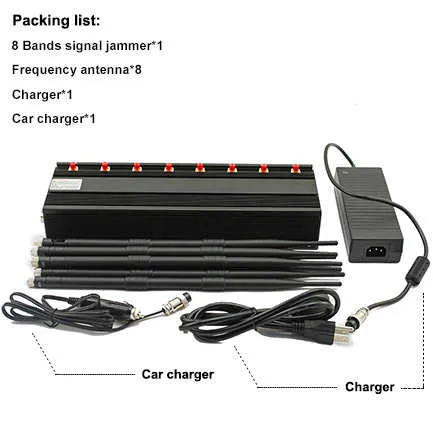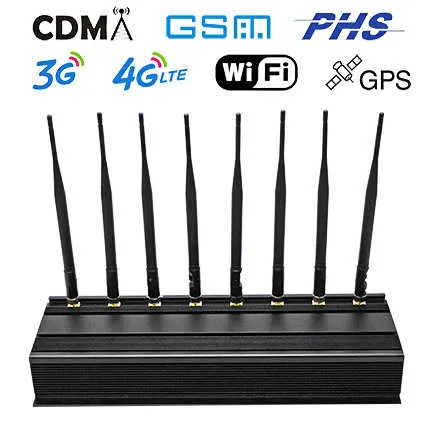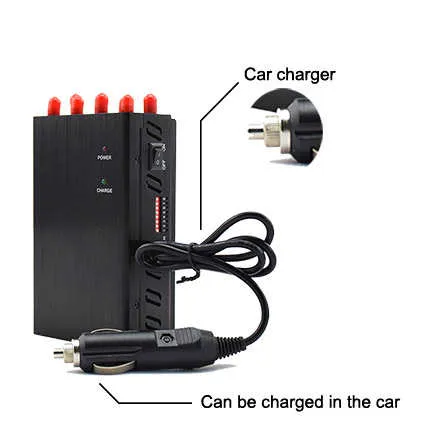A few years ago, a Florida man was fined $48,000 by the FCC for using an illegal signal jammer during his commute to stop nearby drivers from using their phones.
I can understand. I bet you can too.
-
In California and at least a dozen other states, it's illegal to drive with a cell phone in your hand. But that doesn't stop people from doing it.
-
Every day comes across careless, self-righteous fools who endanger themselves and those around them by chatting or texting on the road.
-
That's why I'm calling on the auto industry to install signal-jamming technology on steering wheels so drivers (not passengers) can't succumb to the temptation to play with their gadgets while driving 3,000 pounds of steel at 60 mph for an hour.
Admittedly, things are complicated.
-
"If parents have the option to get their kids off the ground and developing safe driving habits, there could be real safety benefits," said Rosemary Shahan, president of Consumers for Auto Reliability and Safety, a Sacramento-based advocacy group. .
-
“But if it’s conceived as a way to change the behavior of all drivers, it seems unlikely that those who are the worst offenders when it comes to cell phone use will be inclined to buy the option,” she told me.
-
If such technology is mandatory, Shahan observes, "in an emergency, what about calling 911 in an unsafe situation, or using your phone to navigate or get directions?"
These are big questions. But we face a big problem.
The National Highway Traffic Safety Administration says 37,133 people were killed in motor vehicle crashes last year, with more than 3,000 of those deaths from distracted driving. Thousands of people are injured each year when drivers take their eyes off the road.
I reached out to the Alliance of Automobile Manufacturers, an industry group, to find out where the automakers stand. Brian Goodman, spokesman for the group, said the automaker takes the matter seriously.
"We can all agree that hands on the wheel and eyes on the road are still key to safe driving," he said, adding that phones "were never designed to be used while driving."
But Goodman insists there is only so much the industry can do. He emailed me a link to the FCC page that addresses the issue.
It said, "Federal law prohibits the operation, marketing, or sale of jammer devices of any type, including cellular and personal communications services (PCS), police radar, global positioning systems (GPS), and wireless network services (Wi-Fi).
The FCC states clearly, "These devices pose a serious risk to critical public safety communications and may prevent you and others from making 911 and other emergency calls. Jammers also interfere with law enforcement communications."
"Jamming devices poses a serious security risk," P. Michele Ellison, director of the agency's enforcement bureau, said in a statement on the website. "Over the coming weeks and months, we will intensify our efforts by working with law enforcement to target those who continue to break the law. It's there.

However, the FCC was wrong.
The agency lives in a world where low-power signal jammers might have a range of about 30 feet, while more advanced equipment can block all transmissions the size of a football field. These obviously raise public safety concerns.
But what if small-scale jamming technology could be mounted on the steering wheel with a range of just a few inches—not enough to affect surrounding vehicles, or even other occupants in the car, but enough to prevent drivers from being stupid?
What if the technology was flexible enough not to interfere with medical cell phone jamming device like pacemakers or insulin pumps? Or streaming music services?
What if the most important thing is that it doesn't interfere with law enforcement or emergency calls?
"It can be done," said Todd Humphreys, an associate professor of engineering at UT Austin. "Properly calibrated, the interference was strong enough to overwhelm a driver's cell phone near the steering wheel, but not enough to overwhelm a passenger's cell phone."
He said the gsm jammer could use an algorithm to adjust its output based on changes in cell signal strength as the vehicle moves, so the jamming field remains consistent.
However, the human element is always present.
Humphreys correctly points out that some knuckle-dragging drivers (my word, not his) will try to avoid the jamming field by keeping their phones at an arm's length or leaning back in their seats.
"This could lead to a situation that is more dangerous than what we are trying to prevent," he said.
T. Charles Clancy, executive director of Virginia Tech's Hume Center for National Security and Technology, thinks the same.
"If you're texting and driving right now, you're going to use whatever wingspan you have to get around jamming technology," he said.
The trick, says A. Lee Swindlehurst, a professor of electrical engineering and computer science at the University of California, Irvine, is "finding the sweet spot where only the driver's device is disturbed," no matter where he or she puts the phone.
It's technically possible, he said, "but it would be a challenging design."
Maybe we don't want to go the interference route. Perhaps instead, we equip all phones with gps jamming device that don't allow texting if their sensors and cameras detect motion, or if they see the user quickly raising and lowering their eyes while driving.
It may also be feasible to develop jamming techniques that block incoming signals but not outgoing calls, which would solve the problem in emergencies, said Marwan Krunz, a professor of electrical and computer engineering at the University of Arizona.
The point is that there are possible solutions as long as federal authorities are willing to change.
No one at the FCC responded to my repeated requests for comment.
The Floridian who was fined $48,000 has apparently been jamming people's cell phones on the highway for several years. He was charged with "using an illegal device" and told to stop.
Be bold, though.
More people die each year from distracted driving than were killed in the September 11 terrorist attacks. This should indicate that we have a major public safety threat on hand.
Doing nothing should not be an option.










 lire la suite(0) commentairestags : Mother Day Offer for
lire la suite(0) commentairestags : Mother Day Offer for













